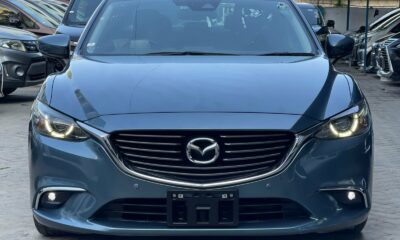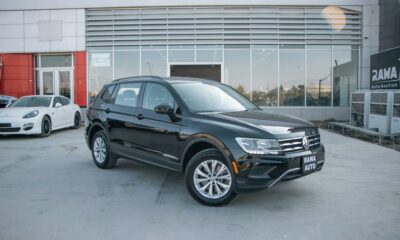Motoring
Finding Diamonds in the Rough: Your Guide to Cars Under R40,000 in South Africa

Let’s have a real conversation about what R40,000 buys you in today’s South African car market. I was at a braai last weekend where my cousin Sipho asked me this exact question. He’s a teacher, needs a reliable car to get to school, and his budget is tight. Sound familiar?
This isn’t about finding a perfect car. It’s about finding an honest one that won’t leave you stranded on the N1. Having helped countless friends and family through this process, I can tell you that the R40k mark is where the real hunting begins. You’re leaving the absolute bottom of the market and stepping into territory where, with sharp eyes and patience, you can find genuine treasures.
What Your Money Actually Buys You
For forty thousand rand, you’re looking at cars that are typically between 15 and 20 years old. We’re talking about vehicles from the early 2000s to around 2010. The kilometers will be high think 180,000 to 250,000 km but here’s what many people don’t understand: high mileage on a well maintained car is far better than low mileage on a neglected one.
The cars in this bracket often surprise people. You’re not just looking at basic hatchbacks anymore. You might find decent family sedans, early compact MPVs, and even some entry level SUVs if you’re lucky. The key difference from the R30k market? These cars often have working air conditioning, decent sound systems, and safety features like airbags became more common in this era.
The Trusty Steeds: Models That Won’t Let You Down
After watching which cars keep running in our townships, suburbs, and cities, certain names consistently rise to the top. These are the vehicles your mechanic sees least often, and when he does, he can fix them without needing to order special parts from overseas.
The Unkillable Champion: Toyota Tazz 1.3
I know, I know. You’ve heard this before. But there’s a reason every second mechanic drives one. The Tazz is to South African roads what a cast iron pot is to a kitchen: basic, indestructible, and perfect for the job. The 1.3-liter engine is so simple that most problems can be diagnosed with a screwdriver and educated ear.
Look for models from 2002 onwards, as they benefited from minor but important upgrades. The sweet spot? A Tazz with around 200,000km that has a verifiable service history. Yes, the interior will be basic, and the ride will be firm, but you’ll struggle to find a more reliable companion for your daily commute.
The German Workhorse: Volkswagen Citi Golf
The Citi Golf carries a certain cultural weight in South Africa that transcends its mechanical components. But beyond the nostalgia, it’s a brilliantly simple car that’s cheap to maintain and surprisingly enjoyable to drive. Later models, particularly the 1.4i and 1.6i, offer decent power for highway driving.
The Citi Golf’s main enemy is rust. You need to check the sills, the floor pans, and around the wheel arches. A well maintained example with a folder full of service receipts is worth its weight in gold. I recently saw one with 380,000km that still starts first time every morning. That’s not an exception; that’s a well looked after Citi Golf.
The Surprising Practical Choice: Toyota Avanza 1.5
If you need to move more than just yourself, the Avanza starts appearing at the upper end of this budget. It’s not glamorous, but its seven seat configuration has saved many a family from having to buy two cars. The 1.5 liter engine is robust, and while it won’t win any drag races, it will reliably move your entire family.
Look carefully at the rear seats and mechanisms. They get heavy use. Check for service history meticulously these are often family cars that either received excellent care or were run into the ground. There’s rarely an in between.
The Street Smart Inspection: Don’t Leave Home Without This Checklist
Before you even think about test driving, do this:
First, the paperwork. No roadworthy certificate, no deal. I’ve seen people buy cars without one, thinking they’ll sort it out later. They never do. Check that the VIN on the license disc matches the one stamped in the engine bay.
Second, the cold start. Message the seller and tell them not to start the car before you arrive. A engine that fires up smoothly when cold tells you most of what you need to know about its mechanical health. Listen for rattles, watch for smoke.
Third, the oil check. With the engine off and cool, remove the oil filler cap. If you see a white, creamy substance, walk away immediately. This indicates a leaking head gasket, and the repair will cost more than the car.
Finally, trust your gut. If the seller seems evasive, if the deal feels too good to be true, if something just feels off walk away. There will always be another car.
The Reality Check: Setting Your Expectations
You need to understand that any car at this price will need some work. Budget at least R5,000 for immediate repairs and maintenance. You’ll likely need new tyres, a proper service, and maybe some brake work. This isn’t a sign you’ve bought a lemon; it’s the reality of buying a vehicle that’s been on our roads for fifteen years.
The goal isn’t perfection. The goal is reliable transportation that gets you where you need to go without draining your bank account. I’ve seen these humble cars put children through school, get people to jobs, and become part of families for years.
The right car is out there. It might take a few weekends of searching, and you might have to look at a few disappointing examples first. But when you find that one owner car with a full service history, owned by a retiree who just used it for church and shopping, you’ll know. And it will be worth the wait.
Start your search with clear eyes and realistic expectations, and you’ll find a car that serves you well for years to come.
Click here for more Motoring News
Follow Carmag on Instagram and Facebook
Click here to browse Cheap Cars for sale



























